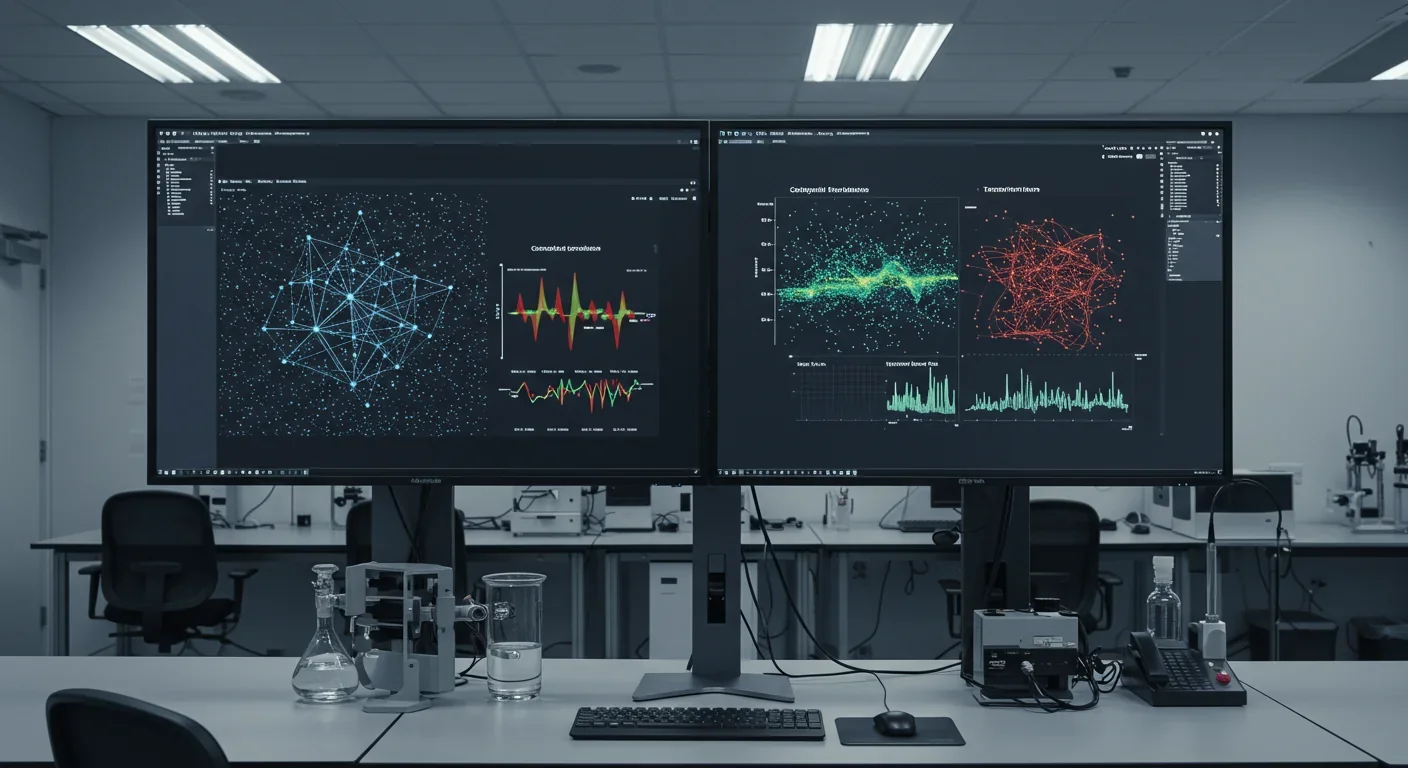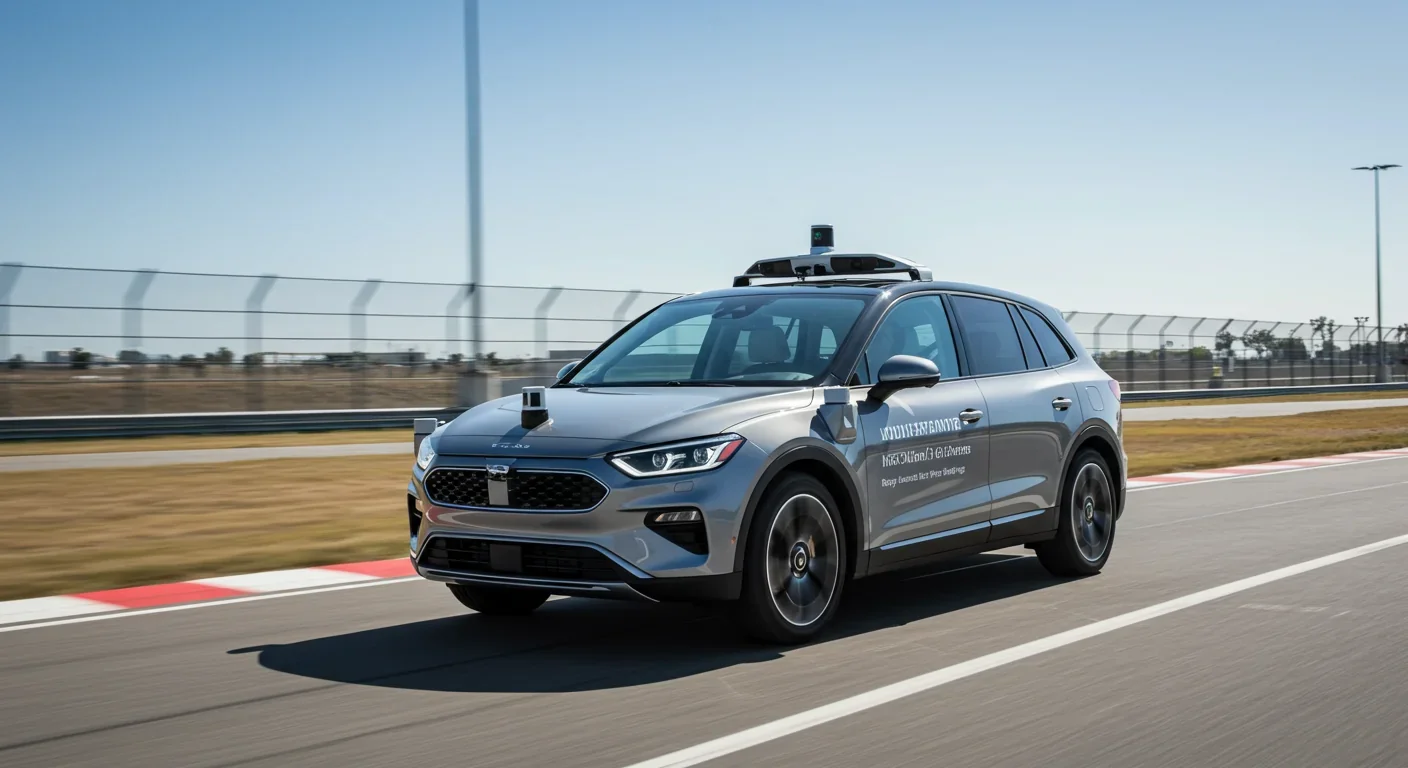How Transformers Replaced Word2Vec in NLP

TL;DR: Vision Transformers are challenging CNNs' decade-long dominance in computer vision by replacing local convolutions with global self-attention mechanisms. While ViTs excel with massive datasets and require substantial compute, hybrid architectures combining both approaches are emerging as the practical choice for real-world deployment.

For over a decade, convolutional neural networks reigned supreme in computer vision. From identifying faces in photos to detecting tumors in medical scans, CNNs seemed unbeatable. Then, in 2020, researchers asked a provocative question: what if we ditched convolutions entirely? The answer—Vision Transformers—didn't just offer an alternative. It sparked a revolution that's forcing every AI engineer to rethink how machines see.
The shift isn't just academic. Companies are betting billions on which architecture will dominate the next generation of autonomous vehicles, medical diagnostics, and content moderation systems. Choose wrong, and you're stuck with yesterday's technology. Choose right, and you unlock capabilities that seemed impossible just years ago.
Back in 2012, AlexNet shocked the world by winning ImageNet with unprecedented accuracy. The secret? Convolutional layers that automatically learned spatial hierarchies of features from images. Instead of hand-crafting filters to detect edges, corners, and textures, CNNs discovered these patterns through training.
The architecture was elegant. Early layers detected simple features like edges and gradients. Deeper layers combined these into complex patterns—wheels, windows, facial features. By stacking convolutional layers with pooling operations, networks like VGG and ResNet built increasingly sophisticated representations.
This approach dominated because it matched how we thought vision worked: hierarchical, local, and translation-invariant. If you learned to recognize a cat in one corner of an image, the same filters would work anywhere else. CNNs baked these assumptions—called inductive biases—directly into their architecture.
For years, improvements meant going deeper and wider. ResNet introduced skip connections to train networks with hundreds of layers. EfficientNet optimized the balance between depth, width, and resolution. By 2020, CNNs had achieved superhuman performance on many benchmarks, with some architectures approaching theoretical limits on standard datasets.
CNNs dominated computer vision for nearly a decade, but their core assumptions about locality and translation invariance would ultimately become limitations rather than strengths.
But cracks were appearing. Training deep CNNs required careful architecture design. The local receptive fields meant networks needed many layers to capture long-range dependencies. And while CNNs worked brilliantly on images, they struggled with tasks requiring global context—exactly where transformers excelled in language processing.

The limitations weren't obvious at first. CNNs worked so well that questioning their core assumptions seemed unnecessary. But as researchers pushed boundaries, constraints emerged.
Locality constraints meant CNNs processed images through small windows. A 3x3 filter sees only nine pixels at once. To understand relationships between distant image regions—say, matching a person's face to their hand gesture—required stacking dozens of layers. Even then, the receptive field grew slowly, making global reasoning inefficient.
Inductive biases that made CNNs sample-efficient also limited flexibility. Translation equivariance assumed visual patterns meant the same thing everywhere. That's true for detecting cats, but not for understanding spatial relationships in complex scenes. The rigid grid structure couldn't easily adapt to irregular layouts or varying image sizes without architectural gymnastics.
Scalability hit walls that weren't immediately obvious. While CNNs performed well on standard datasets like ImageNet (1.2 million images), they didn't scale as efficiently as language models when given truly massive datasets. Transformers in NLP showed that with enough data, more parameters consistently improved performance. CNNs seemed to plateau, suggesting their architectural assumptions limited learning capacity.
The final straw? Self-attention mechanisms were demolishing benchmarks in natural language processing. If transformers could model long-range dependencies in text so effectively, why not images?
In 2020, Google researchers published "An Image is Worth 16x16 Words," introducing the Vision Transformer (ViT). The core insight was beautifully simple: treat images like sequences of words.
Here's how it works. Take an image and divide it into fixed-size patches—typically 16x16 pixels. Flatten each patch into a vector, just as you'd convert words to embeddings in NLP. Add positional encodings so the model knows where each patch sits spatially. Then feed this sequence through standard transformer layers.
The magic happens in self-attention. Unlike CNNs that process images through local windows, self-attention computes relationships between all patches simultaneously. A patch in the top-left corner can directly attend to patches in the bottom-right. From the first layer, ViTs have a global receptive field.
"Vision Transformers treat images as sequences of patches, allowing self-attention mechanisms to capture global dependencies from the very first layer—something CNNs require dozens of layers to achieve."
— Computer Vision Research, 2020
This architectural shift had profound implications. Transformers don't assume locality or translation equivariance. They learn these properties if needed, but aren't constrained by them. The model discovers which image regions matter for each task, allowing flexible reasoning about spatial relationships.
Early results were startling. When pre-trained on massive datasets like JFT-300M (300 million images), ViTs matched or exceeded CNN performance on ImageNet classification. More surprisingly, they achieved this while requiring less computational resources during training—a hint that transformers scaled more efficiently.
But there was a catch. ViTs needed enormous datasets to shine. Train them from scratch on ImageNet, and CNNs won handily. The lack of inductive biases meant transformers had to learn everything from data, requiring millions of examples to discover basic visual principles CNNs encoded by design.

So which architecture actually performs better? The answer depends entirely on your constraints.
On standard benchmarks with massive pre-training datasets, ViTs dominate. When Google researchers pre-trained ViT-Huge on JFT-300M, it achieved 88.55% top-1 accuracy on ImageNet—exceeding the best CNNs at the time. Transfer learning was even more impressive. Pre-trained ViTs, when fine-tuned on downstream tasks, often outperformed specialized CNN architectures designed specifically for those problems.
For object detection and instance segmentation, hybrid approaches showed remarkable results. Researchers testing on COCO 2017 found that transformer backbones like Swin Transformer consistently outperformed ResNet-50 and ResNeXt across multiple frameworks, while maintaining competitive speed.
Medical imaging revealed fascinating patterns. A study comparing ViT, DeiT, BEiT, ConvNeXt, and Swin Transformer for oral health analysis found that transformers excelled at fine-grained classification tasks requiring global context, while CNNs maintained advantages in scenarios with limited training data.
The architecture debate isn't about finding a universal winner—it's about understanding which approach fits your specific constraints: dataset size, computational budget, and task requirements.
But here's where it gets interesting. For small datasets—say, a few thousand images—CNNs still win. Their inductive biases act as powerful regularizers, allowing them to generalize from limited examples. A comparison on tiny datasets showed CNNs achieving 10-15% higher accuracy than ViTs when training samples dropped below 10,000 images.
Computational efficiency presents another trade-off. Standard ViTs have quadratic complexity with respect to image resolution. Self-attention over N patches requires N² operations, making high-resolution images prohibitively expensive. CNNs' local operations scale linearly, offering efficiency advantages for large images.
Recognizing that both architectures had strengths, researchers began combining them. The results suggest the future isn't choosing between CNNs and transformers—it's using both intelligently.
Swin Transformer pioneered hierarchical vision transformers that borrowed CNN concepts. Instead of processing all patches globally, Swin confines self-attention to non-overlapping local windows, dramatically reducing computational cost to linear complexity. Between layers, windows shift to enable cross-window communication. This design achieves transformer flexibility while matching CNN efficiency.
The results speak for themselves. Swin Transformer topped ImageNet classification among transformer architectures while outperforming ResNet-50 on object detection across multiple frameworks. Its hierarchical feature maps—constructed at multiple scales—proved ideal for dense prediction tasks like segmentation.
ConvNeXt took the opposite approach: modernizing CNNs with transformer design principles. Researchers started with a standard ResNet and systematically applied transformer techniques—larger kernels, GELU activations, LayerNorm, and inverted bottlenecks. The result matched pure transformer performance while retaining CNN efficiency and simplicity.

CAS-ViT introduced convolutional additive self-attention, combining local convolutions with global attention in a single mechanism. This architecture achieved ViT-level accuracy with 30% fewer parameters and faster inference, making it viable for mobile deployment.
DeiT (Data-efficient Image Transformer) tackled the data hunger problem with distillation techniques borrowed from knowledge transfer. By training ViTs to mimic pre-trained CNNs, DeiT achieved competitive performance on ImageNet-1K alone—no massive pre-training required.
"The best vision architectures of 2025 freely mix ideas from CNNs and transformers. Hierarchical processing, local and global attention, convolutional stems—these are tools, not opposing ideologies."
— Vision Architecture Research, 2025
These hybrid approaches reveal an important truth: the architectural debate isn't binary. The best solutions cherry-pick ideas from both paradigms, using convolutions for efficiency and local feature extraction, transformers for global reasoning and flexibility.
Performance benchmarks tell only part of the story. Real-world deployment requires balancing accuracy against computational budgets, memory constraints, and latency requirements.
Standard ViTs are computationally expensive. A ViT-Large model processing a 224x224 image performs roughly 2-3x more FLOPs than a comparable ResNet. The quadratic self-attention cost means doubling image resolution quadruples compute requirements. For applications processing high-resolution images or video streams, this overhead becomes prohibitive.
Memory footprint presents similar challenges. Attention mechanisms require storing attention matrices that scale with sequence length squared. For a 512x512 image divided into 16x16 patches, that's 1,024 patches—requiring over 4MB just for attention scores in a single layer with 64 attention heads. Multiply by 12-24 layers, and memory usage explodes.
But efficiency isn't destiny. Researchers have developed clever workarounds. MicroViT introduced hierarchical pooling and efficient attention to reduce complexity while maintaining accuracy, achieving real-time inference on edge devices. Techniques like windowed attention, gradient checkpointing, and mixed-precision training make transformers increasingly practical.
For mobile and edge deployment, model compression techniques like pruning, quantization, and knowledge distillation can shrink transformers by 5-10x with minimal accuracy loss. MobileViT and EfficientViT variants target this space specifically, proving transformers aren't inherently incompatible with resource constraints.
The emerging pattern? For data center deployments with ample compute, pure transformers or minimal hybrids offer best performance. For edge devices and real-time applications, efficient hybrids or modernized CNNs remain competitive. Architecture selection depends on your specific constraints—there's no universal winner.

So what are companies actually deploying? The answer reveals pragmatic choices that sometimes diverge from academic benchmarks.
Autonomous vehicles face extreme latency requirements and must process high-resolution camera feeds in real-time. Tesla's computer vision stack reportedly uses hybrid CNN-transformer architectures, employing efficient transformers for tasks like trajectory prediction (where global context matters) while keeping CNNs for low-level feature extraction. Waymo has published research on using transformers for multi-camera fusion, suggesting similar architectural choices.
Medical imaging increasingly favors transformers. Studies across radiology, pathology, and dermatology show ViTs outperforming CNNs on tasks requiring fine-grained discrimination and rare pattern detection. The ability to attend globally helps identify subtle abnormalities that local CNN features might miss. However, the small dataset reality means most deployments use heavily pre-trained models or hybrid architectures.
Content moderation at scale leans toward transformers. Meta has discussed using vision-language models built on transformer backbones to understand context and detect harmful content that evades purely visual detection. The ability to jointly model images and text proves crucial for nuanced moderation decisions.
Satellite and aerial imagery analysis presents interesting constraints. Images can be gigapixel-scale, making global attention computationally absurd. Hierarchical transformers like Swin or efficient hybrid models dominate, processing images at multiple resolutions and using attention only where global context adds value.
Industry deployments reveal a clear pattern: pure CNN architectures are declining, but pure transformer deployments remain rare. The practical choice almost always involves hybridization.
The pattern across industries? Pure CNN deployments are declining, but so are pure transformer deployments. The practical choice almost always involves some hybridization, combining architectural elements based on task requirements rather than ideological commitment to one paradigm.
The architecture wars aren't over. Current research suggests several promising directions that could reshape the landscape again.
Foundation models represent the most immediate trend. Just as BERT and GPT transformed NLP by providing pre-trained models for fine-tuning, vision foundation models like DINO and DINOv2 offer self-supervised pre-training that transfers remarkably well across tasks. These models learn visual representations without labels, achieving strong performance even on niche applications with minimal fine-tuning.
Multi-modal architectures are blurring boundaries between vision and language. Models like Grounding-DINO combine transformers across modalities, allowing natural language queries to guide visual processing. This direction suggests future architectures won't be purely vision models but integrated systems reasoning jointly over multiple input types.
Efficiency innovations continue to advance. Researchers are developing linear-complexity attention mechanisms that maintain global receptive fields without quadratic cost. Techniques like sparse attention, low-rank approximations, and learned routing show promise for making transformers competitive with CNNs on efficiency.
Neural architecture search is automatically discovering hybrid architectures that outperform hand-designed alternatives. Automated search over combined CNN-transformer design spaces has produced models that cherry-pick the best components from both paradigms in ways human designers might not consider.
Explainability remains a challenge, especially for medical and safety-critical applications. Recent research on vision transformer interpretability shows that while attention maps provide some insight, understanding what transformers learn remains harder than visualizing CNN filters. Solving this could determine adoption in regulated industries.
Perhaps most intriguingly, some researchers are questioning whether visual processing needs dedicated architectures at all. Unified transformer models that handle vision, language, and other modalities with the same underlying architecture suggest we might be moving toward general-purpose models rather than vision-specific solutions.
So you're building a computer vision system. Which architecture should you choose?
If you have massive datasets (millions of images) and ample compute resources, transformers or efficient hybrids offer best performance. Pre-train on your domain data or fine-tune from public foundation models. The global reasoning capabilities often justify the computational overhead.
For smaller datasets (thousands to tens of thousands of images), CNNs or minimal hybrids remain competitive. Their inductive biases provide regularization that helps with limited data. Consider data augmentation and transfer learning from CNN models pre-trained on ImageNet before jumping to transformers.
When deployment targets edge devices or requires real-time inference, efficient architectures matter more than peak accuracy. MobileViT, EfficientViT, or modernized CNNs offer practical compromises. Benchmark on your actual hardware constraints, not just FLOPs.
For tasks requiring global context—fine-grained classification, scene understanding, multi-modal reasoning—transformers show clear advantages. Medical imaging, document analysis, and complex scene interpretation often fall into this category.
But here's the real insight: the question isn't "CNN or transformer?" It's "which combination of techniques best fits my constraints?" The best architectures of 2025 freely mix ideas from both paradigms. Hierarchical processing, local and global attention, convolutional stems, efficient attention variants—these techniques are architectural tools, not opposing ideologies.
Step back from the technical details, and a broader pattern emerges. The shift from CNNs to transformers mirrors changes throughout AI: from hand-crafted inductive biases to learned representations, from specialized architectures to general-purpose models, from small curated datasets to massive pre-training.
This evolution carries implications beyond computer vision. If transformers can match CNNs—architectures specifically designed for visual processing—by simply learning from data, what does that suggest about the necessity of domain-specific architectures? The success of unified transformer models across vision, language, and other modalities hints at a future where architectural specialization matters less than scale and training techniques.
For practitioners, this means the skills that matter are shifting. Understanding specific architectures remains valuable, but knowing how to adapt, combine, and optimize architectures for your constraints becomes crucial. The ability to intelligently deploy pre-trained models, fine-tune effectively, and choose appropriate architectural components matters more than deep expertise in any single paradigm.
For researchers, the frontier is moving from architecture design to understanding how and why these models work. What are transformers learning that differs from CNNs? How can we make them more efficient, interpretable, and robust? What inductive biases should we preserve, and which can we safely discard?
The computer vision revolution isn't about transformers defeating CNNs. It's about expanding our toolkit, understanding trade-offs more deeply, and matching architectural choices to application requirements. The real winners aren't the architectures themselves—they're the practitioners who understand when to use which tool.

Curiosity rover detects mysterious methane spikes on Mars that vanish within hours, defying atmospheric models. Scientists debate whether the source is hidden microbial life or geological processes, while new research reveals UV-activated dust rapidly destroys the gas.

CMA is a selective cellular cleanup system that targets damaged proteins for degradation. As we age, CMA declines—leading to toxic protein accumulation and neurodegeneration. Scientists are developing therapies to restore CMA function and potentially prevent brain diseases.

Intercropping boosts farm yields by 20-50% by growing multiple crops together, using complementary resource use, nitrogen fixation, and pest suppression to build resilience against climate shocks while reducing costs.

Cryptomnesia—unconsciously reproducing ideas you've encountered before while believing them to be original—affects everyone from songwriters to academics. This article explores the neuroscience behind why our brains fail to flag recycled ideas and provides evidence-based strategies to protect your creative integrity.

Cuttlefish pass the marshmallow test by waiting up to 130 seconds for preferred food, demonstrating time perception and self-control with a radically different brain structure. This challenges assumptions about intelligence requiring vertebrate-type brains and suggests consciousness may be more widespread than previously thought.

Epistemic closure has fractured shared reality: algorithmic echo chambers and motivated reasoning trap us in separate information ecosystems where we can't agree on basic facts. This threatens democracy, public health coordination, and collective action on civilizational challenges. Solutions require platform accountability, media literacy, identity-bridging interventions, and cultural commitment to truth over tribalism.

Transformer architectures with self-attention mechanisms have completely replaced static word vectors like Word2Vec in NLP by generating contextual embeddings that adapt to word meaning based on surrounding context, enabling dramatic performance improvements across all language understanding tasks.